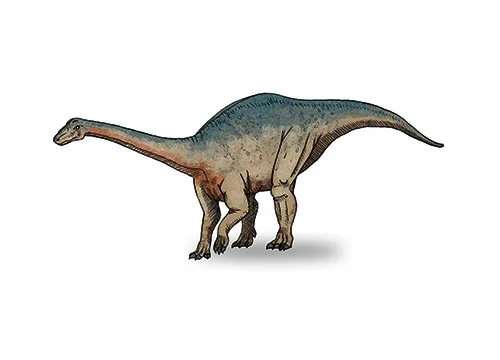Riojasaurus (Rioja lizard)

Re-o-jah-sore-us
Jose Fernando Bonaparte - 1967
Herbivore
Estimated 10 meters long
Sauropod
R. incertus (type)
Argentina, La Rioja Province - Los Colorados Formation
Late Triassic, 225 million years ago
Riojasaurus Facts
Riojasaurus was a long-necked, herbivorous dinosaur that lived during the Late Triassic period, approximately 225 million years ago, in what is now Argentina. It was named after the Rioja Province in Argentina, where its fossils were first discovered.
Riojasaurus was a relatively large dinosaur, with an estimated length of up to 10 meters (33 feet) and weight of around 3,000 kilograms (6,600 pounds). It had a long, slender neck with up to 12 cervical vertebrae, which allowed it to reach vegetation high off the ground. Its front legs were shorter than its back legs, and it walked on all four limbs.
Riojasaurus is classified as a sauropodomorph dinosaur, which is a group of long-necked, herbivorous dinosaurs that includes some of the largest animals to have ever lived on land, such as Apatosaurus and Brachiosaurus. However, Riojasaurus is one of the earliest known members of this group, and its body shape was not as specialized for long-distance travel and high browsing as some of its later relatives.
One interesting feature of Riojasaurus is the presence of a semi-circular bony structure at the base of its neck, known as the cervical half-ring. This structure may have helped support the weight of its long neck and enabled it to hold its head up while browsing on vegetation.
Despite its large size, Riojasaurus was not at the top of the food chain in its ecosystem. It likely fell prey to carnivorous dinosaurs such as Herrerasaurus and Eoraptor, which were also present in the same region during the Late Triassic.
Overall, Riojasaurus is an important early representative of the sauropodomorph dinosaurs, which went on to become some of the most successful and iconic herbivorous dinosaurs in Earth’s history. Its discovery has helped shed light on the early evolution of these fascinating animals and the complex ecosystems they lived in.



